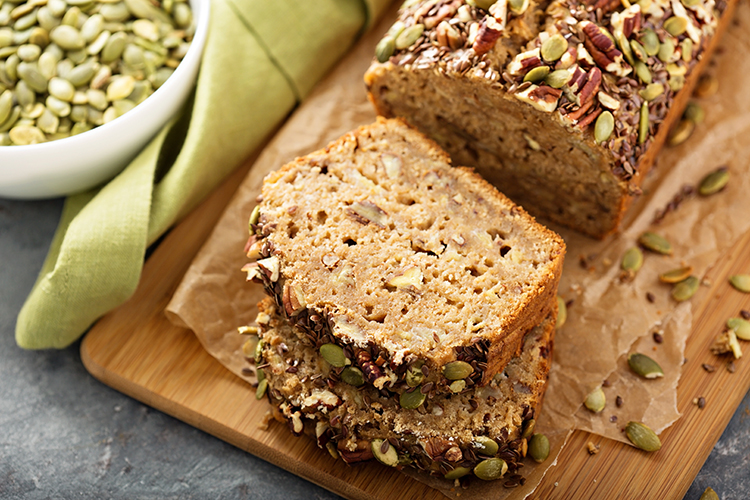Of the many health claims currently circulating in the food world, “nutrient-dense” may not have the same name recognition as, say, clean label, gluten-free, free-from or keto.
But nutrient-dense, which describes foods high in nutrients but relatively low in calories, is top of mind for many consumers. A 2018 study conducted by the International Food Information Council found that 86% of respondents 50 and older want to replace less healthy foods and beverages with more nutrient-dense options.
U.S. grocers and foodservice establishments are taking notice. Of the two instore shelf tags created by California retail chain Raley’s to inform its customers about health claims, one is dedicated to nutrient-dense foods. The tags describe nutrient-dense foods as those “containing vitamins, minerals, dietary fiber and other beneficial substances that may have positive health effects.”
In the bakery world, whole grains and ancient grains are often categorized under the heading of nutrient-dense. Much of the demand for whole and ancient grains, in fact, is a byproduct of consumers’ desire to eat healthy, nutrient-dense products.
“We’ve definitely seen an increase in demand for baked goods made with nutrient-dense ingredients like whole grains, ancient grains, pulses, nuts and seeds,” said JoAnn Rupp, global market insights manager for bakery for Lenexa, Kan.-based Corbion. “The nutrient-dense baked goods category will continue to see growth as more consumers look for foods that provide health benefits.”
The success of nutrient-dense has given bakers a powerful tool to promote their products in an age often unfavorable to the baked goods category’s health claims.
“Bakers have an opportunity to counteract the low-carb movement by providing more nutrient-dense baked goods that meet consumers’ health and wellness goals,” Rupp said. “ With the health and wellness movement driving sales, many consumers are reading labels of the products before purchasing them. Adding extra grains to baked goods can help bakers appeal to consumers seeking out ‘better for you’ products.”
Additionally, many consumers perceive products made with nutrient-dense ingredients to be fresher because they often pack a powerful punch in terms of flavor and appearance.
A surge in interest for different types of ancient grains also is helping drive demand for nutrient-dense baked goods. What started with quinoa has since spread to sorghum, teff and other ancient grains that are showing up in more and more breads and other baked goods.
Many bakers are comfortable enough now working with ancient grains to use them with other nutrient-dense ingredients in applications, Rupp said.
“We’re seeing a lot of bakers combining nutrient-rich grains like quinoa, amaranth, teff, rye, barley and spelt with pulses like lentils, chickpeas and dried peas to boost the protein content of baked goods,” she said.
Adding ancient grains isn’t the only way to increase the nutrient density of baked goods. Boosting a product’s healthfulness can be as simple, Rupp said, as incorporating oats, bulgur and other whole grains into applications or adding nutrient-dense inclusions like fruits, nuts and seeds to deliver different tastes and textures.
“All of these options can allow bakers to add flavor and improve product appearance while meeting nutritional demands,” she said.
Adding whole grains to baked goods used to mean extra time and hassle for bakers. Reformulations had to be tailored to prevents grains from stealing moisture, which affects taste, reduces shelf life and accelerates staling.
Now there are solutions that make it much easier. Corbion’s pre-soaked, pre-cooked grains, for instance, allow bakers to effortlessly incorporate added grains into their recipes.
“They’re ready to use and can be added directly to existing formulations, or even on top of the application, to create multiple varieties without the added cost of reformulation,” Rupp said. “These solutions make it easier for bakers to add visual appeal, texture and flavor, as well as improve the overall nutritional benefits and artisan feel of their products with less hassle and waste.”


